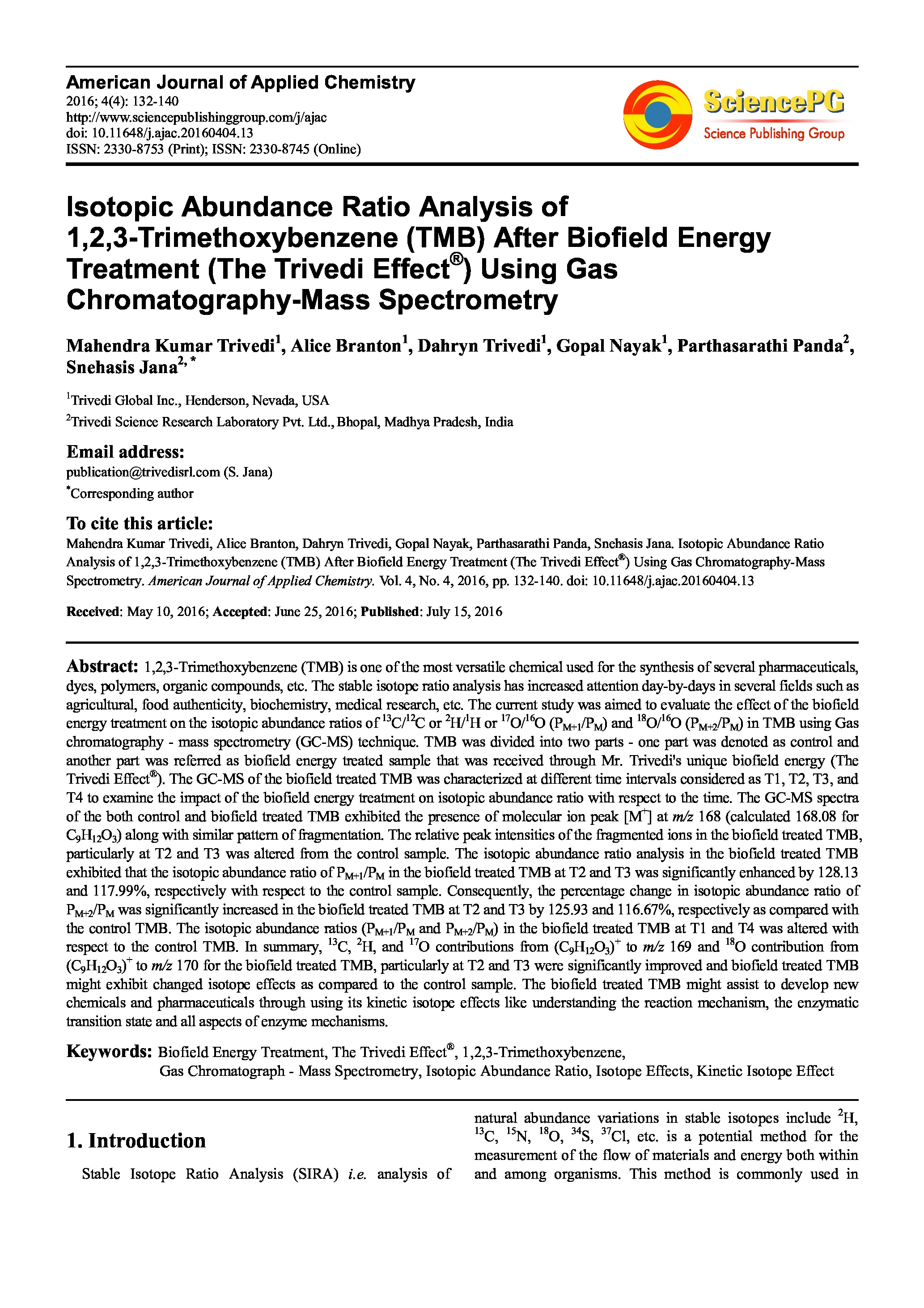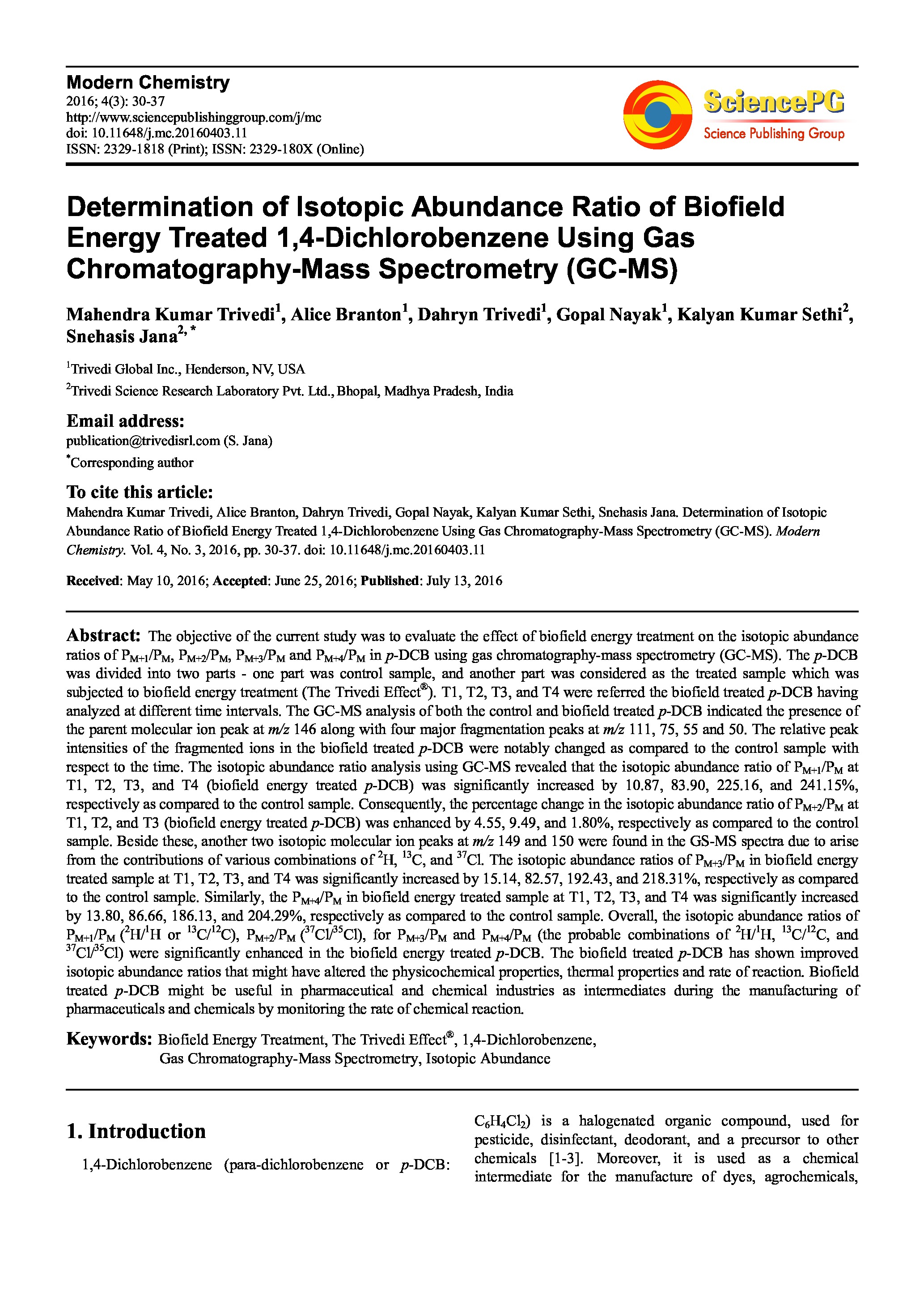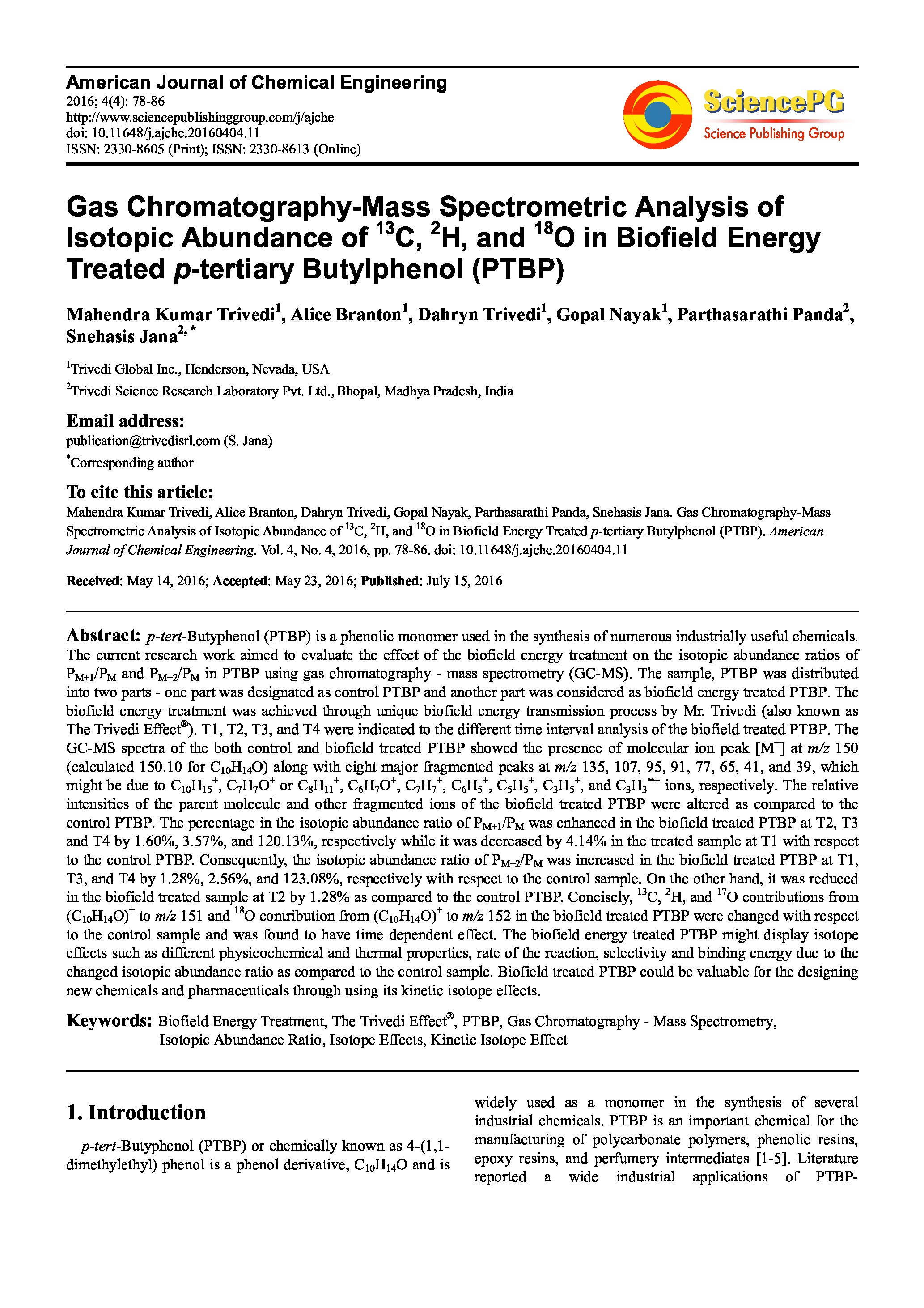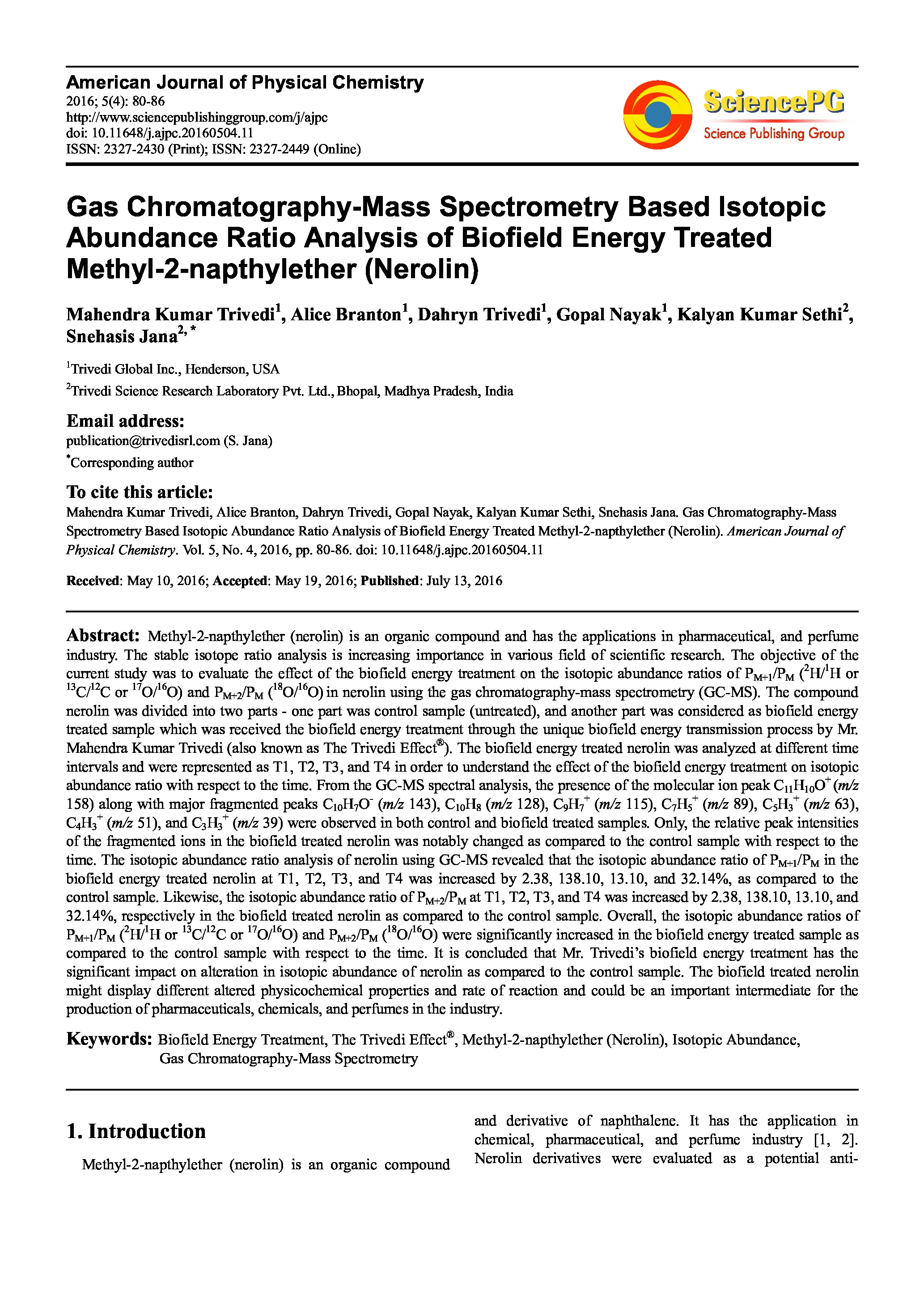Date of upload:
14.12.2016
Co-author:
Mahendra Kumar Trivedi, Alice Branton, Dahryn TrivediMahendra Kumar Trivedi, Alice Branton, Dahryn Trivedi, Kalyan Kumar Sethi, Snehasis Jana
Abstract:
The objective of the current study was to evaluate the effect of biofield energy treatment on the isotopic abundance ratios of PM+1/PM, PM+2/PM, PM+3/PM and PM+4/PM in p-DCB using gas chromatography-mass spectrometry (GC-MS). The p-DCB was divided into two parts - one part was control sample, and another part was considered as the treated sample which was subjected to biofield energy treatment (The Trivedi Effect®). T1, T2, T3, and T4 were referred the biofield treated p-DCB having analyzed at different time intervals. The GC-MS analysis of both the control and biofield treated p-DCB indicated the presence of the parent molecular ion peak at m/z 146 along with four major fragmentation peaks at m/z 111, 75, 55 and 50. The relative peak intensities of the fragmented ions in the biofield treated p-DCB were notably changed as compared to the control sample with respect to the time. The isotopic abundance ratio analysis using GC-MS revealed that the isotopic abundance ratio of PM+1/PM at T1, T2, T3, and T4 (biofield energy treated p-DCB) was significantly increased by 10.87, 83.90, 225.16, and 241.15%, respectively as compared to the control sample. Consequently, the percentage change in the isotopic abundance ratio of PM+2/PM at T1, T2, and T3 (biofield energy treated p-DCB) was enhanced by 4.55, 9.49, and 1.80%, respectively as compared to the control sample. Beside these, another two isotopic molecular ion peaks at m/z 149 and 150 were found in the GS-MS spectra due to arise from the contributions of various combinations of 2H, 13C, and 37Cl. The isotopic abundance ratios of PM+3/PM in biofield energy treated sample at T1, T2, T3, and T4 was significantly increased by 15.14, 82.57, 192.43, and 218.31%, respectively as compared to the control sample. Similarly, the PM+4/PM in biofield energy treated sample at T1, T2, T3, and T4 was significantly increased by 13.80, 86.66, 186.13, and 204.29%, respectively as compared to the control sample. Overall, the isotopic abundance ratios of PM+1/PM (2H/1H or 13C/12C), PM+2/PM (37Cl/35Cl), for PM+3/PM and PM+4/PM (the probable combinations of 2H/1H, 13C/12C, and 37Cl/35Cl) were significantly enhanced in the biofield energy treated p-DCB. The biofield treated p-DCB has shown improved isotopic abundance ratios that might have altered the physicochemical properties, thermal properties and rate of reaction. Biofield treated p-DCB might be useful in pharmaceutical and chemical industries as intermediates during the manufacturing of pharmaceuticals and chemicals by monitoring the rate of chemical reaction.




